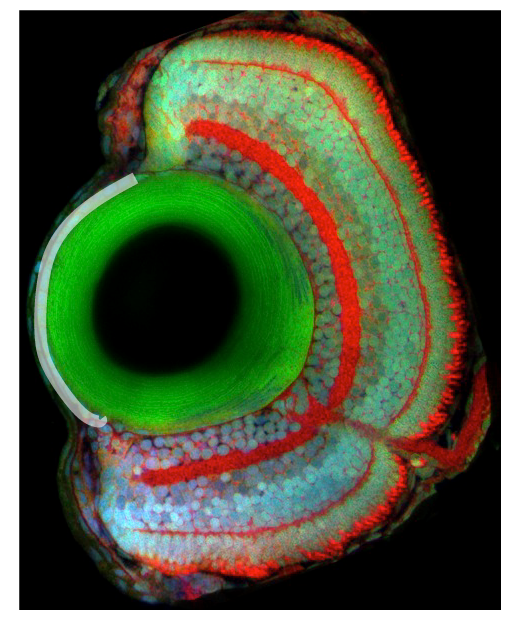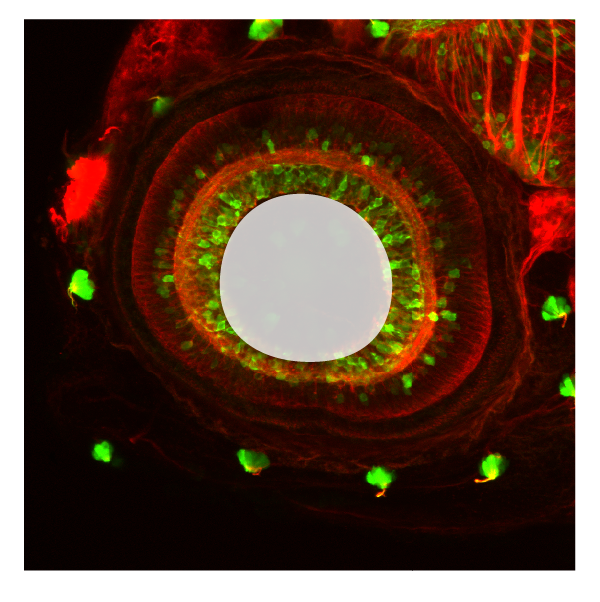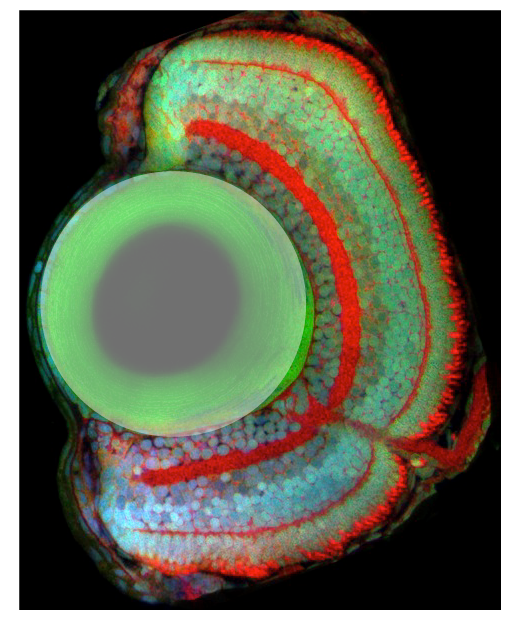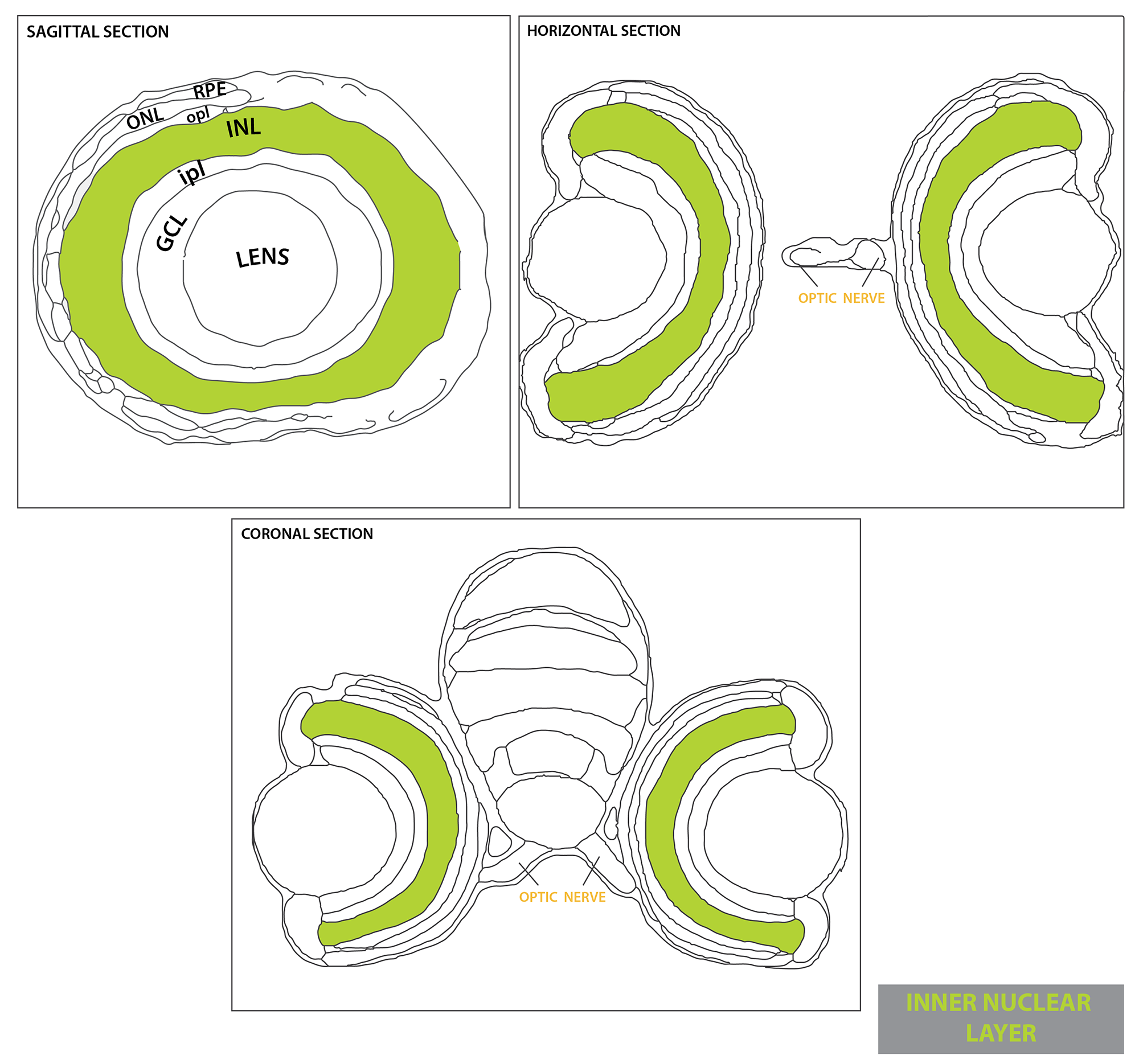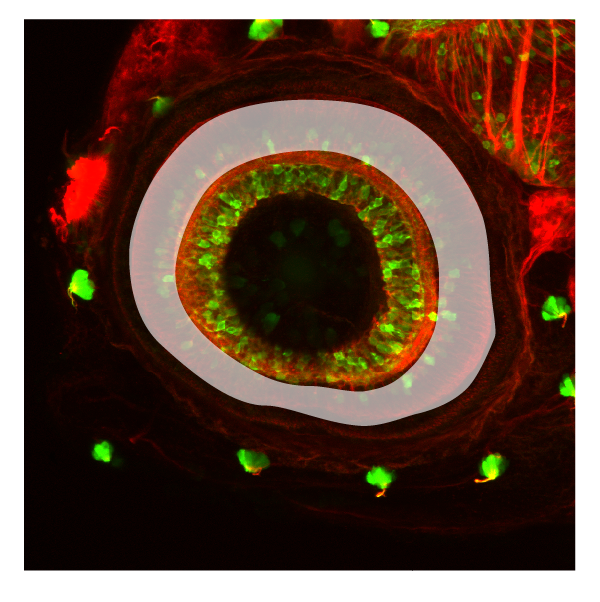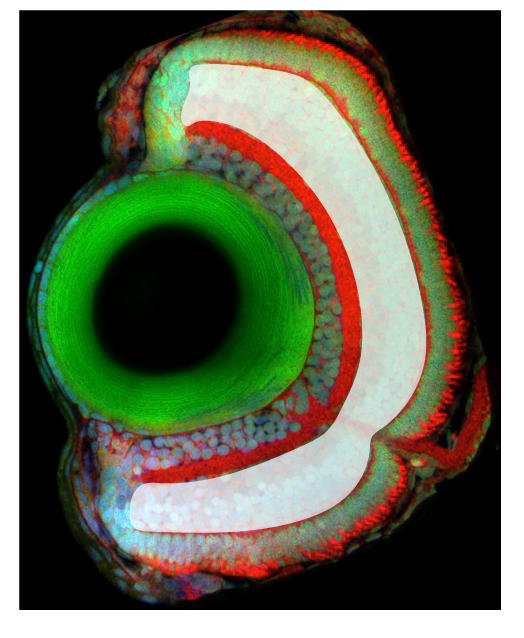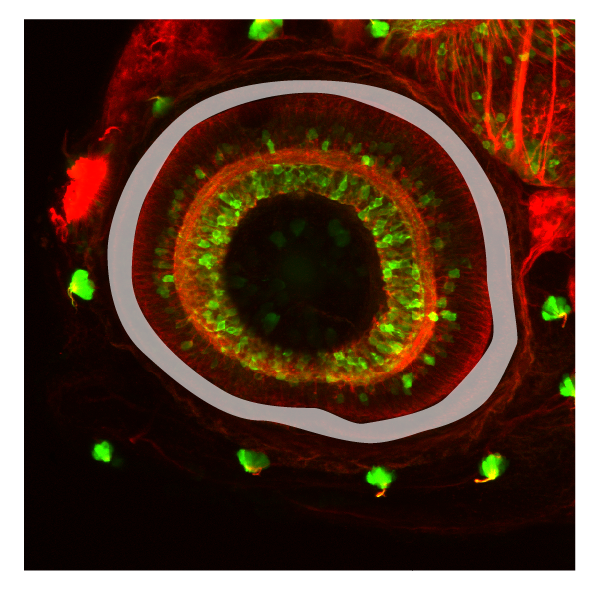Description
In the zebrafish eye, all the stages of progression from stem cell to differentiated neuron are found near the margin of the eye in a region termed the ciliary marginal zone (CMZ). This type of retinal stem cell niche is found in all non-mammalian vertebrates and contain perpetually self-renewing, proliferative neuroepithelial cells that are spatially ordered with respect to cellular development and differentiation. The youngest and least determined cells are most peripheral, proliferative retinoblasts are located in the middle, and the quiescent, differentiating cells are most central (Fig 1). Cell behaviour of neuronal precursors within the CMZ is likely influenced by environmental signals emmanating from the surrounding tissues, including the RPE, lens, and mature retina.
Development of the CMZ:
The ciliary marginal zone is derived from the mitotic neural retina, but little is known about how progenitor cells choose to form the CMZ instead of differentiate into neurons.




